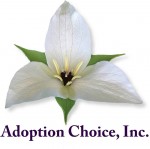Q:What is an adoption assistance program?
A: An adoption assistance program is a benefit by which an employer reimburses an employee for qualified adoption expenses. Up to $10,000 of such reimbursements per adoption are excludable from the employee’s income for federal income tax purposes.
An adoption assistance program must be a separate, written plan that meets certain requirements. The plan must operate under rules that do not favor highly compensated employees, and a maximum of 5% of all payments made under the program during a year may be paid to significant shareholders or owners of the employer. The employer must give reasonable notice of the plan to all employees. Employees must be able to show that payments under the plan are for qualifying adoption expenses.
An employee may deduct up to $10,000 in each year of the adoption expenses that an employer reimburses. The company’s payments may be excluded in more than one year, but the total exclusion may not exceed $10,000 per adoption. The amount you may exclude is phased out according to your total annual income, beginning at $150,000.
Qualifying expenses are reasonable and necessary adoption fees, court costs, attorney fees, traveling expenses (including amounts spent for meals and lodging), and other expenses directly related to the legal adoption of an eligible child. Some examples of expenses that do not qualify include the costs of carrying out a surrogate parenting arrangement, the adoption of your spouse’s child, and expenses allowed as a credit or deduction under any other federal income tax rule.
Reimbursements under an adoption assistance program apply to both domestic and international adoptions. In addition, a special rule applies to the calculation of adoption expenses for a child with special needs. The federal government has enacted even greater incentives to encourage such adoptions. An income exclusion applies regardless of whether you have any actual adoption expenses. The Internal Revenue Code provides that your actual qualified adoption expenses for the adoption of a child with special needs are increased in the year the adoption is finalized by deemed adoption expenses, an amount determined by the difference between $10,000 and the total actual qualified expenses for the adoption incurred during that year and all prior taxable years.
Remember that, separate from the exclusion for adoption assistance program reimbursements, you may also be eligible for a qualified adoption tax credit of $10,000 on your federal income tax return. However, you may not claim both a credit and an exclusion for the same qualified adoption expenses.
You will almost always come out ahead by claiming the tax credit instead of tax-free reimbursements under an adoption assistance program. Generally, an adoption assistance program should be used for adoptions with actual expenses in excess of $10,000 and for adoptions of children with special needs. Determining what works best for you requires an assessment of your own unique tax-related circumstances.
Q: How can you encourage your employer to establish an adoption assistance program?
A: First, tell your Human Resources department about it. Download and share a copy of IRS Publication 968. Emphasize the good will your employer can generate by using the program to establish a reputation as a family-friendly place to work.
An adoption assistance program need not be complicated. The written plan may be a few pages long. And it may be that the plan can be integrated into the employers existing cafeteria plan that offers a range of employee benefits already.


